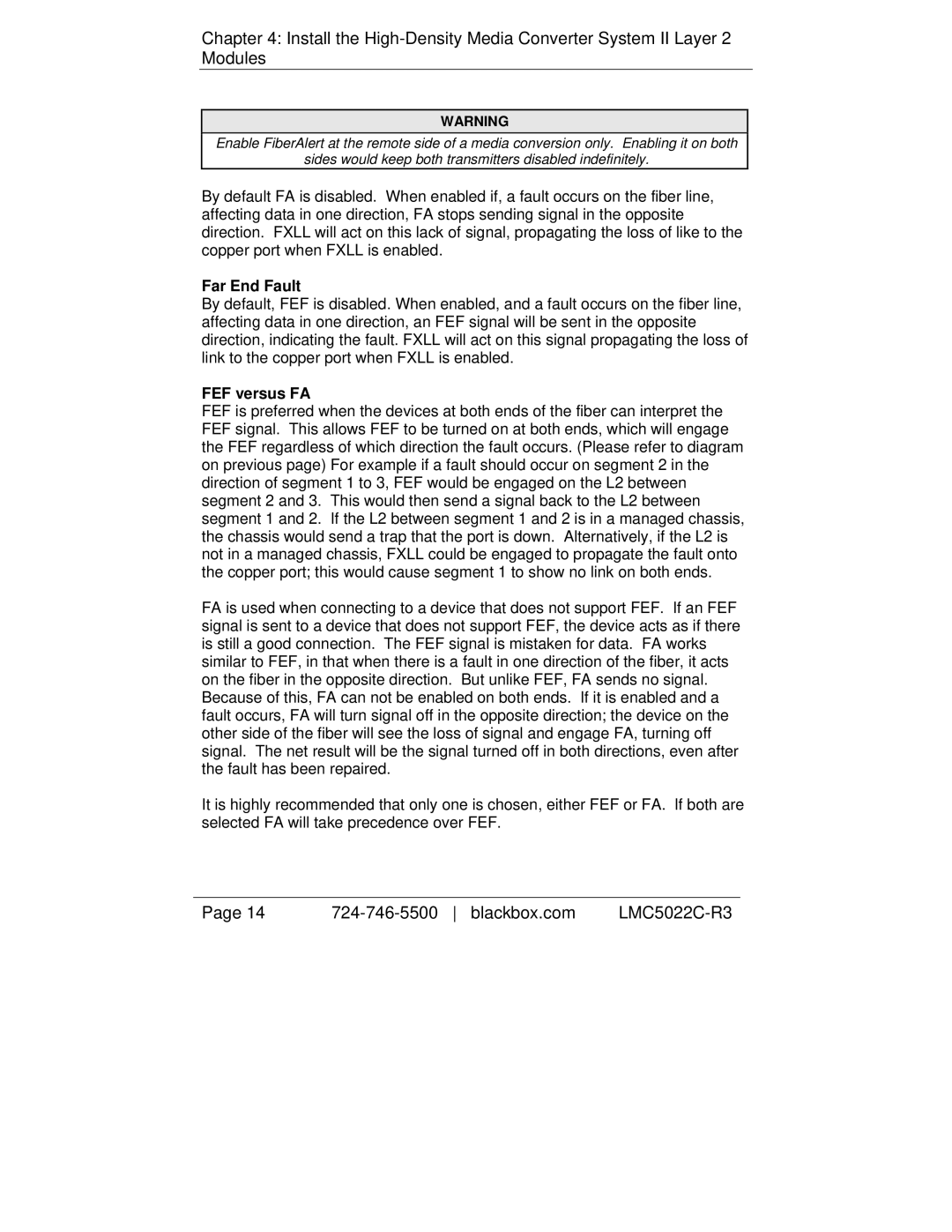
Chapter 4: Install the
WARNING
Enable FiberAlert at the remote side of a media conversion only. Enabling it on both
sides would keep both transmitters disabled indefinitely.
By default FA is disabled. When enabled if, a fault occurs on the fiber line, affecting data in one direction, FA stops sending signal in the opposite direction. FXLL will act on this lack of signal, propagating the loss of like to the copper port when FXLL is enabled.
Far End Fault
By default, FEF is disabled. When enabled, and a fault occurs on the fiber line, affecting data in one direction, an FEF signal will be sent in the opposite direction, indicating the fault. FXLL will act on this signal propagating the loss of link to the copper port when FXLL is enabled.
FEF versus FA
FEF is preferred when the devices at both ends of the fiber can interpret the FEF signal. This allows FEF to be turned on at both ends, which will engage the FEF regardless of which direction the fault occurs. (Please refer to diagram on previous page) For example if a fault should occur on segment 2 in the direction of segment 1 to 3, FEF would be engaged on the L2 between segment 2 and 3. This would then send a signal back to the L2 between segment 1 and 2. If the L2 between segment 1 and 2 is in a managed chassis, the chassis would send a trap that the port is down. Alternatively, if the L2 is not in a managed chassis, FXLL could be engaged to propagate the fault onto the copper port; this would cause segment 1 to show no link on both ends.
FA is used when connecting to a device that does not support FEF. If an FEF signal is sent to a device that does not support FEF, the device acts as if there is still a good connection. The FEF signal is mistaken for data. FA works similar to FEF, in that when there is a fault in one direction of the fiber, it acts on the fiber in the opposite direction. But unlike FEF, FA sends no signal. Because of this, FA can not be enabled on both ends. If it is enabled and a fault occurs, FA will turn signal off in the opposite direction; the device on the other side of the fiber will see the loss of signal and engage FA, turning off signal. The net result will be the signal turned off in both directions, even after the fault has been repaired.
It is highly recommended that only one is chosen, either FEF or FA. If both are selected FA will take precedence over FEF.
Page 14 |
|
